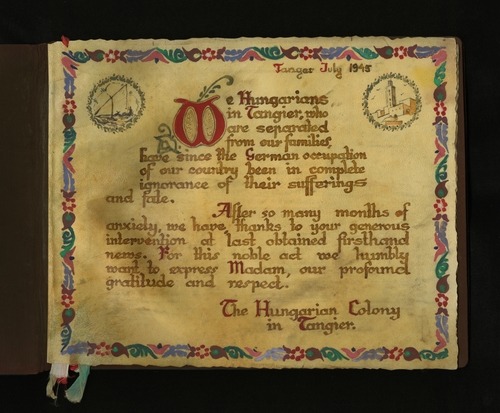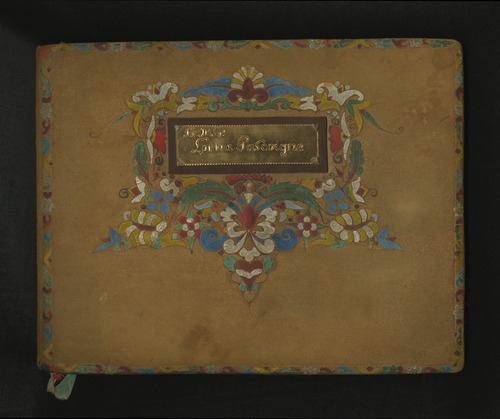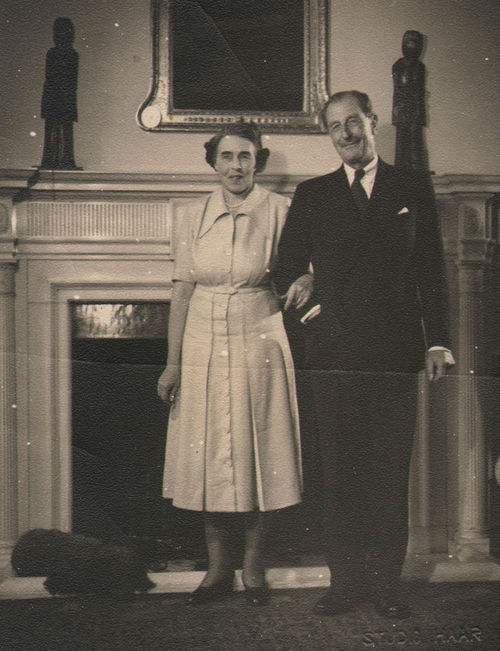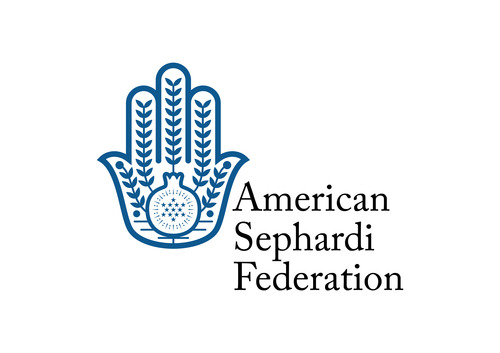
Illuminated Manuscript Presented in Thanks after the Holocaust
July 1945
Tangier, Morocco
Vellum, Gouache and Silk Ribbons, Bound in Leather
From the Collection of the American Sephardi Federation
On display through November 3rd
Hungarian Jews stranded in Morocco during World War II created this lavish thank-you note for Lorna Gascoigne (1887-1979), the second wife of Alvary Douglas Frederick Trench-Gascoigne (1893-1970), the wartime British consul-general at Tangiers. Lorna was famous for her sympathy for the downtrodden, and she somehow helped Jews in Tangiers find out the fates of their families left behind. An unknown artist painted Hungarian floral folk motifs on her vellum and leather tribute, and added sketches of Tangiers buildings as well as a typical rural Hungarian well made of crisscrossed timbers.
During the war Tangiers teemed with European, American and Japanese spies, and over 1,000 Hungarian Jews also poured in, including the resourceful Reichmann family, who managed to ship tons of food packages behind Nazi lines and wangled visas to help other Jews escape. Lorna Priscilla Leatham Gascoigne was familiar with wartime conditions from her four-year stint as a World War I army hospital nurse. In 1935 she married Alvary, whose postings in a three-decade career included Japan, China, Hungary, and the Soviet Union. At Tangiers, the couple lived in colonial splendor, with a view overlooking the stucco skyline spiked with minarets. Alvary spent his days wading through government paperwork and meeting with diplomats and spies, and he escaped an assassination attempt or two. Lorna meanwhile maintained a menagerie of mismatched dogs and she set up an animal sanctuary for donkeys, an elephant, and a lion. Archival research is ongoing to determine exactly how she uncovered “firsthand news” for Jews in Morocco who had suffered “so many months of anxiety.”
Learn more about this history in the Winter 2015 issue of The Sephardi Report (January). The American Sephardi Federation will be loaning this artifact for display at the Jewish Museum of Casablanca, Morocco. To share information, contribute your own documentation or artifacts, or arrange a private viewing, please contact info@sephardi.house or 212.294.8350
(Text from American Sephardi Federation)
Cover of the Illuminated Manuscript:

Sir Alvary and Lady Lorna Gascoigne; photo thought to have been taken in the 1950s – From American Sephardi Federation

About Great Treasures in the Great Hall
In addition to the Partner exhibition spaces, permanent art installations and The David Berg Rare Book Room, the Center has recently started to showcase treasures from all of the Partners in an innovative combination of electronic and physical objects. The project is called Great Treasures in the Great Hall.
In the past, we’ve highlighted an illustrated Megillat Ester (Book of Esther) circa 1750 and The Offenbacher Haggadah both from the Collection of the Leo Baeck Institute. We were also excited about a recent display that featured a selection of performing arts materials, from the Collection of the American Jewish Historical Society, including Irving Berlin’s sheet music for “God Bless America” and two letters from Gershwins—both George and Ira.
An interactive tablet display allows us to add a multimedia dimension to each exhibition, allowing visitors to see additional items, view parts of a work that are not otherwise visible or magnify intricate details.
We invite you to stop by the Center to view these rare and remarkable treasures. More information on visiting the Center can be found here. In the meantime, enjoy our series of posts revealing the stories behind them.

